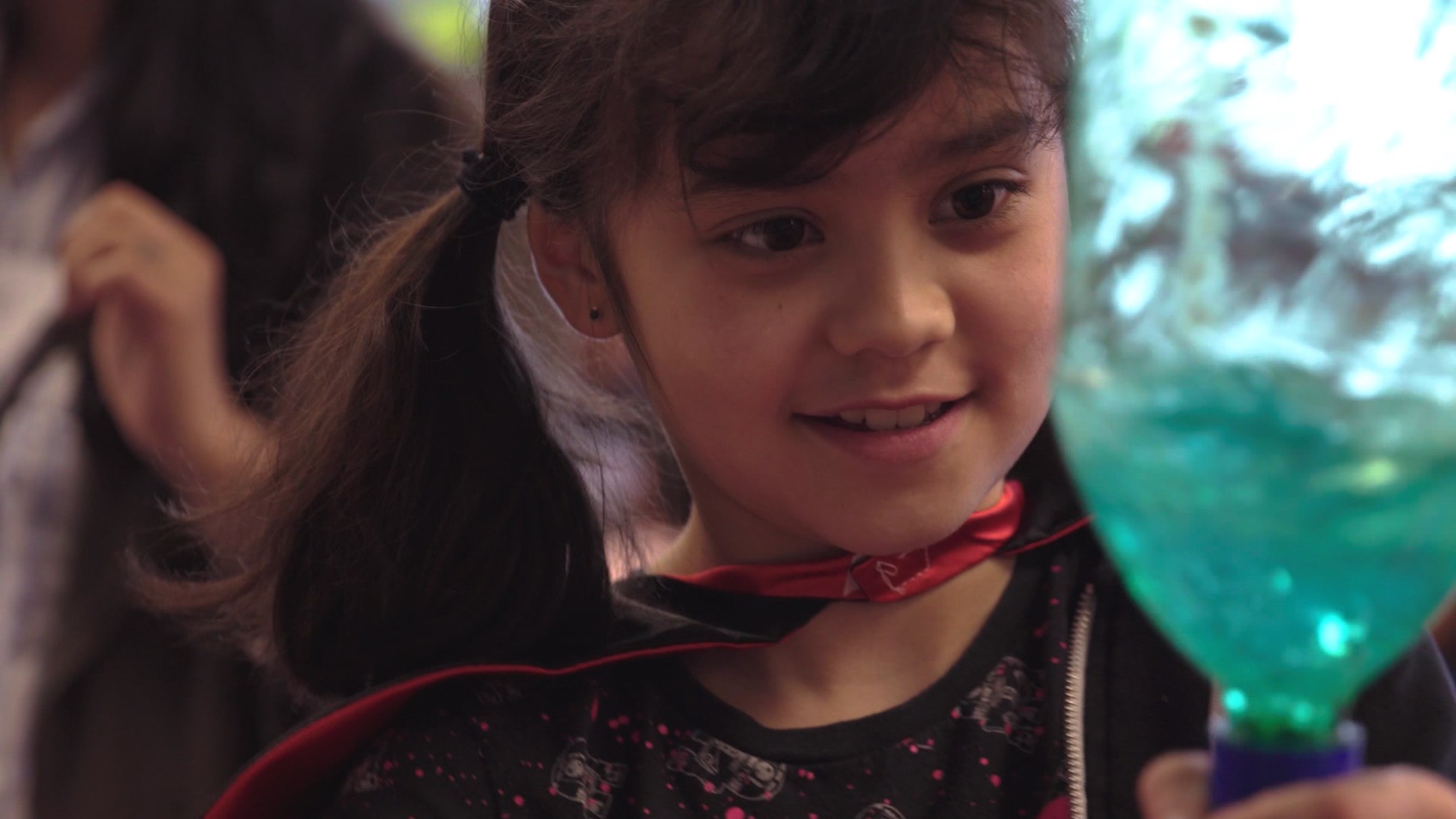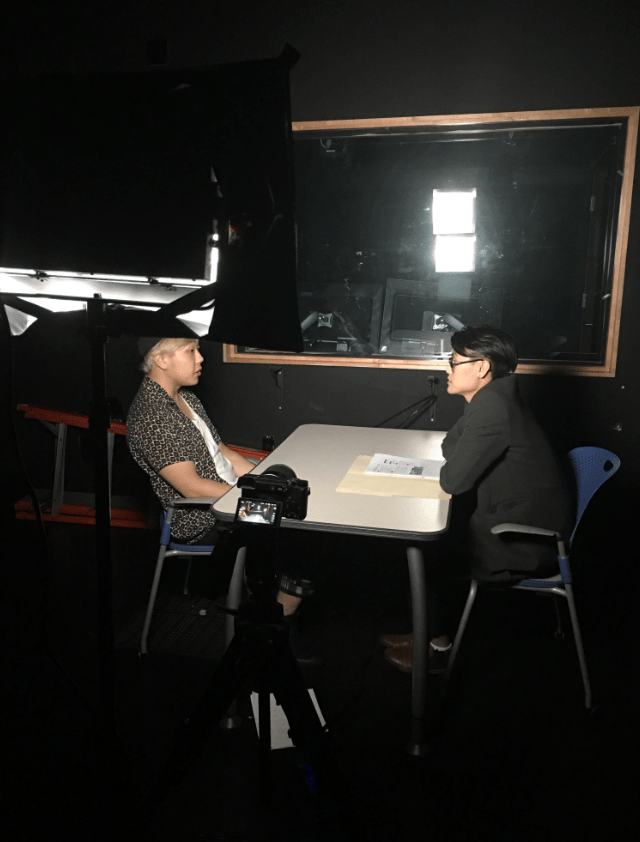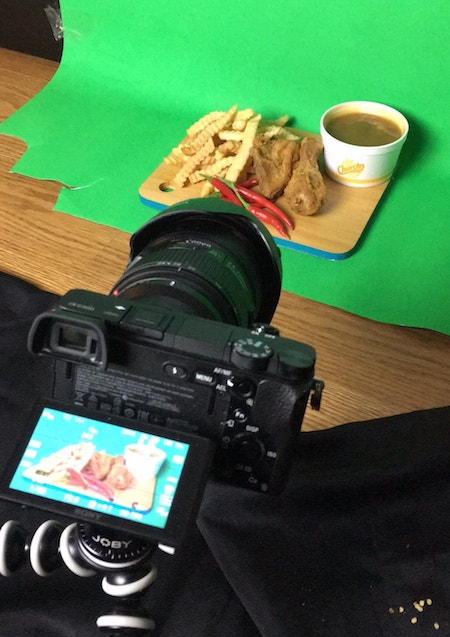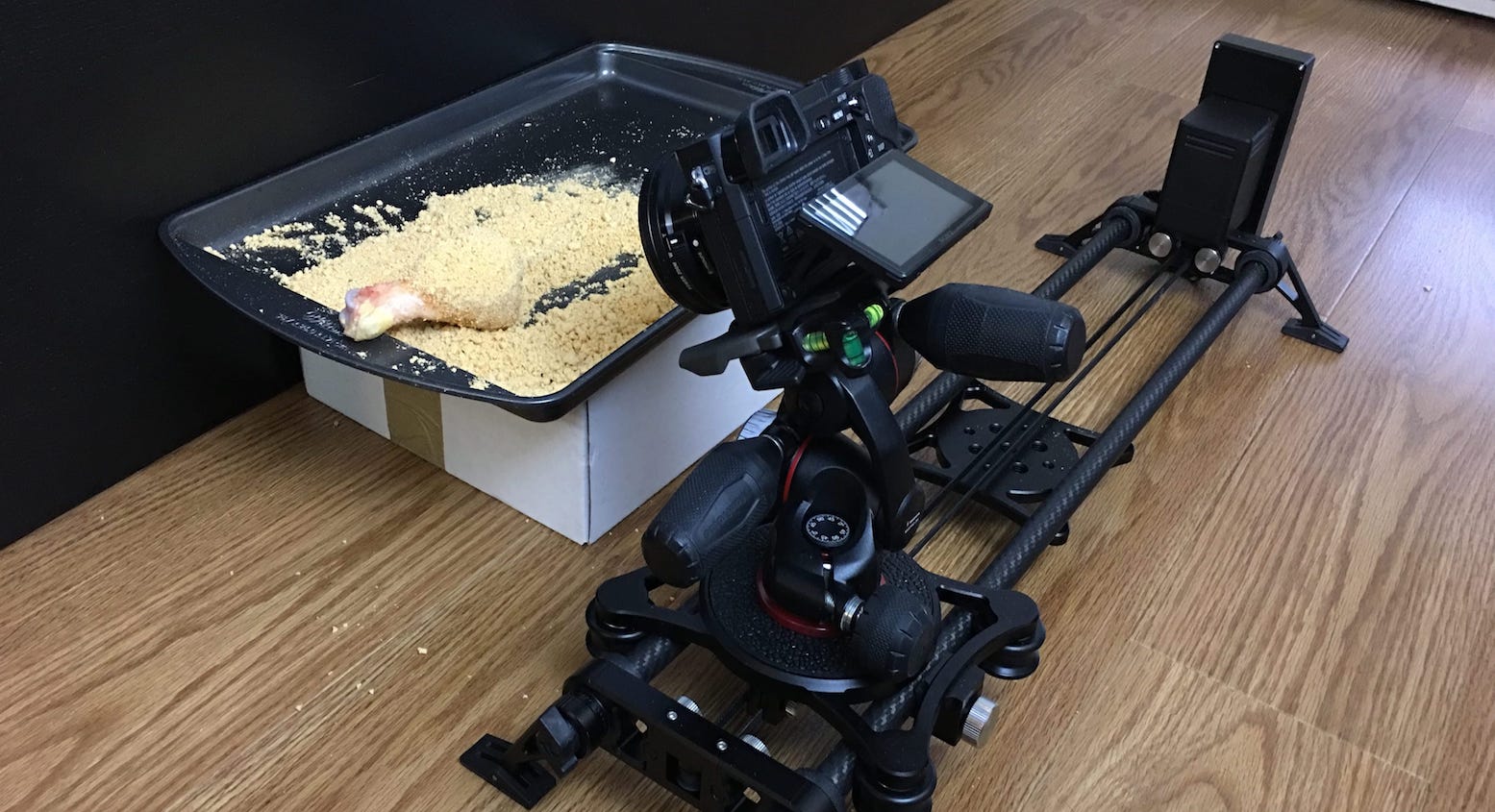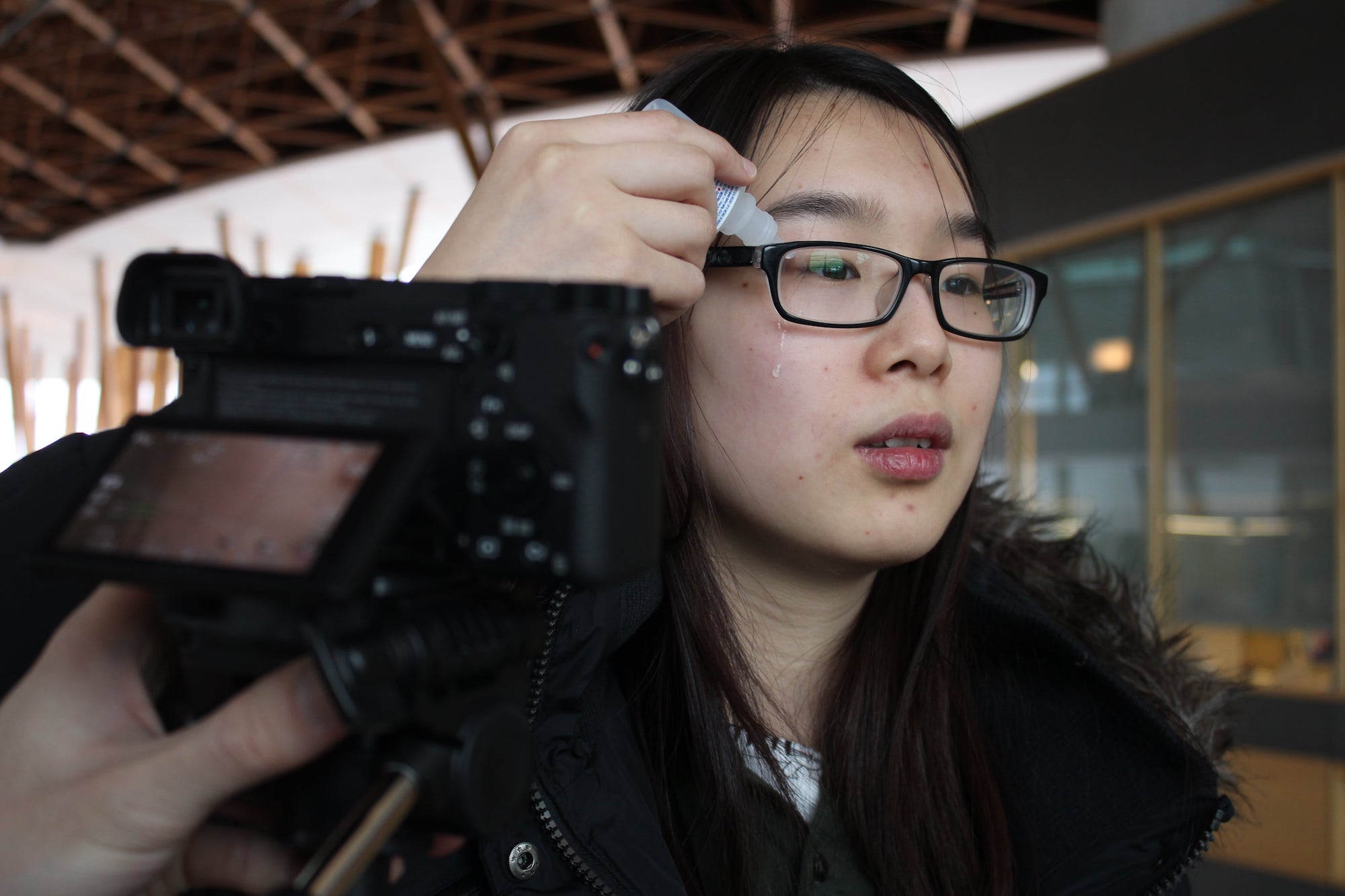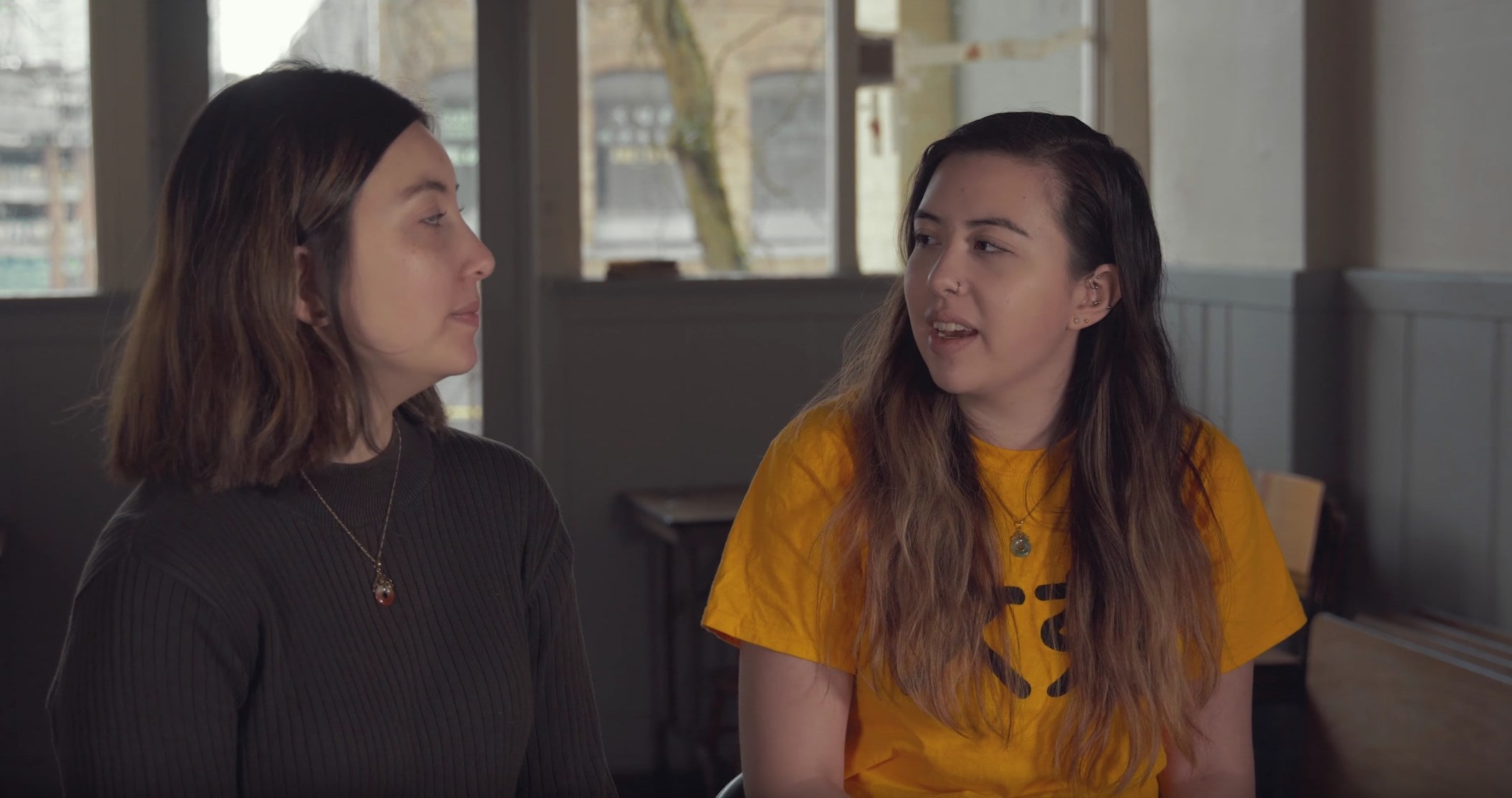Burnaby Festival of Learning 2019
Festival video recap used for sharing and adverstising on the Burnaby Festival of Learning's website for 2020.
Roles: Cinematographer, Editor
Elements: Text Animations, Color Grading
Softwares: Adobe Premiere Pro, Adobe After Effects
Overview
I was hired to be the videographer of City of Burnaby's annual event "Burnaby Festival of Learning 2019" to capture various activities throughout the week-long festival.
From May 4th to May 11th 2019, I was scheduled to film at various events throughout the week. After going through the event brief in our meeting with my event coordinator, I began to prepare for the festival by scoping out the locations where I will be stationed so that I can get familiarized with the places beforehand.
Framed
Interactive murder case for SFU
Roles: Director, Cinematographer, Lead Editor
Elements: Interactive, Tracking, Color Grading
Softwares: Adobe Premiere Pro, Eko Studio, Adobe After Effects
Overview
For the final project, I collaborated with a team of 3 over the course of 2 months to create a functional and digital interactive project in any form of technology that is integrated with rich narrative aspects. Since my group and I are confident with video production, we decided to make an interactive murder case on Eko, an online interactive video platform.
Pre-Production
During our iterative process, I mainly focused on the storyboard because it’s a great way for me to visualise all the major shots and angles to move into production, especially for an interactive film that has multiple different perspectives. I also contributed to the making of a flowchart to illustrate decision points and other interactive possibilities. This overview helped us to convey the different ways the story can flow when we proceed to Eko Studio to make the interactive content at the end.
Critical Moments of Discovery
After testing out Eko Studio, an online interactive video tool, we realised that there wasn’t a feature where the user can be moved automatically to the next scene after they looked at all the evidence unless you connect the nodes manually. This will result in a lot more branches to our flowchart and major confusion to us and the user.
Therefore, I suggested an idea, which was to automatically move the user once they identify three important clues instead of all the clues. This will reduce the amount of work needed on Eko Studio since Eko's tree diagram was fairly overwhelming to complete with no errors.
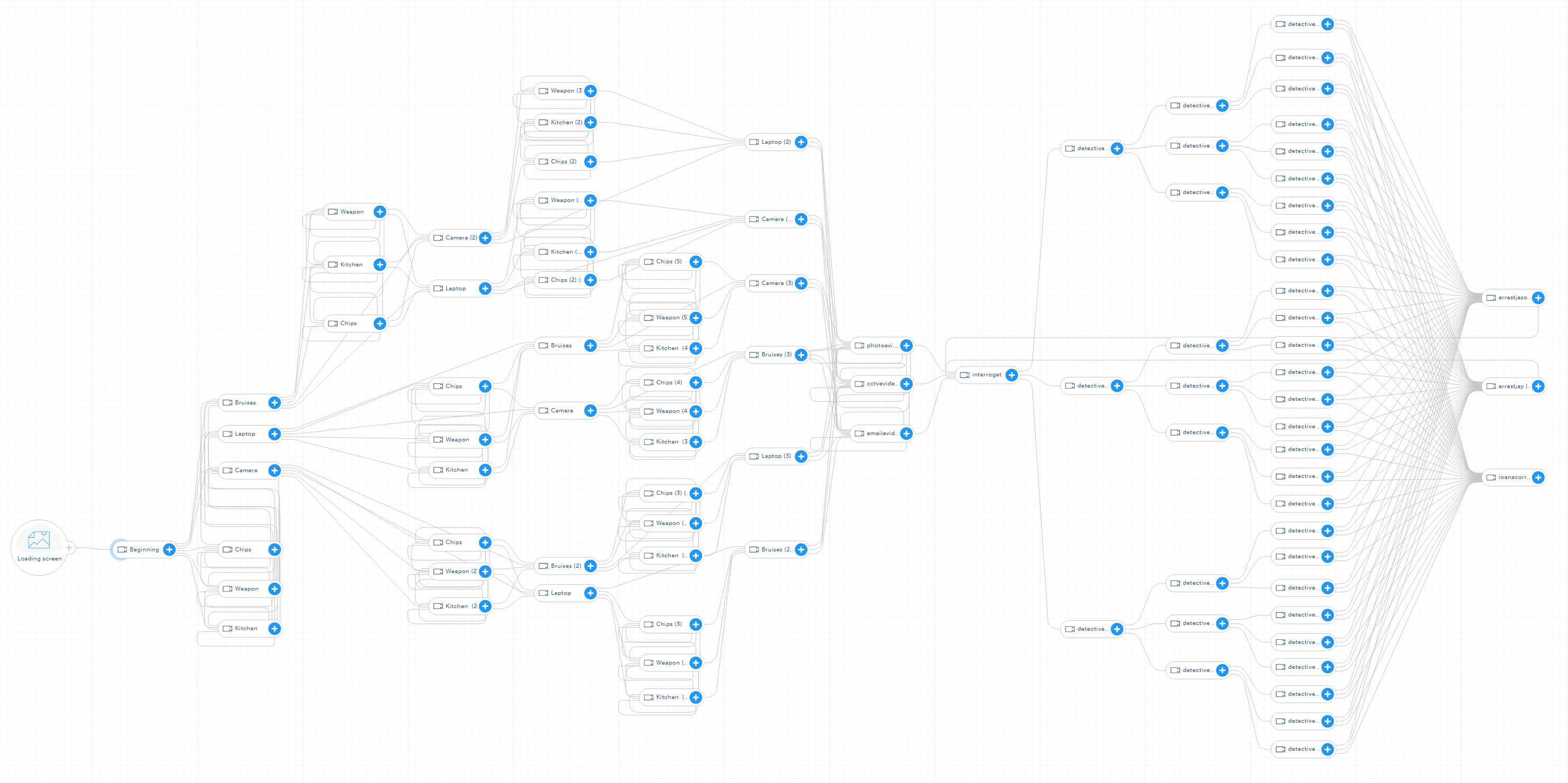
Reflection
The biggest takeaway from this project is realising the importance of pre-production. Within the 2 months, we spent more than a month working on the different phases of pre-production such as brainstorming ideas, researching Eko, finding actors and costumes, storyboarding and scheduling. For my future video projects, I will allocate more time to work on pre-production planning because it builds the foundation of video production.
Church's Chicken
Visual effects project for SFU
Roles: Director, Cinematographer, Editor
Elements: Kinetic Typography, Tracking, Green Screen, Color Grading
Softwares: Adobe Premiere Pro, Adobe After Effects, Adobe Audition
Overview
My individual visual effects project consists of creating a commercial based on my own choice. Therefore, I wanted to challenge myself and see how I can utilize my skills to recreate a fast food commercial that can be comparable to existing fast food advertisements out there. From there on, I decided to go with Church's Chicken as it is one of the famous fried chicken and fast food chains in Vancouver.
Pre-Production
In preparation before the shoot, I watched numerous of fast food commercials specifically fried chicken related so that I can get a sense of the different types of shots and the video pace. When I was ready to begin shooting, I bought all the necessary ingredients to make fried chicken. After shooting all the "fried chicken in the making" scenes, I went to get a Church Chicken's combo to shoot the second half of the commercial.
Critical Moments of Discovery
After editing the rough cut of my commercial, I realised there was something essential missing. Having a voice over will create a more powerful impact to accentuate the taste and flavour of the fried chicken. With that in mind, I was able to record my friend's voice and it turns out to fit well over my commercial after minor adjustments in post production.
One of the improvements that can be made after receiving feedback from my professor and TA was to see if I was able to find a better location to shoot the guy eating the chicken. I decided to re-shoot the eating scenes outside of SFU but unfortunately, I was forced to stop because it was under a private property. Therefore, I decided to reuse those scenes and incorporate something related to the university by adding a promotion at the end of the commercial that targets SFU students. I feel that this will make more sense regarding the environment and setting where the guy is eating the chicken.

Reflection
If I was to revise this project, it would be best to film in a suitable location e.g. outside of a Church's Chicken restaurant so that I can capture both the mood and atmosphere of my commercial.
Perspective
Short film for SFU
Roles: Director, Cinematographer, Editor
Softwares: Adobe Premiere Pro, Adobe After Effects
Overview
IAT 202 New Media Images course was the first film course that I have taken at SFU and the course that first sparked my interest in filmmaking. For the final project, I collaborated with a team of 4 over the course of 2 months to create a short narrative-based film. As a group, we decided to shoot a dramatic film that represents a real life situation and portrays a main character in conflict with her boyfriend.


Pre-Production
After brainstorming our film concept, I focused on drawing out the majority of the storyboard to help me visualise the type of shots and angles for the important scenes. In particular, we wanted to create a dramatic impact right from the beginning by introducing the main character walking along the bridge in despair.
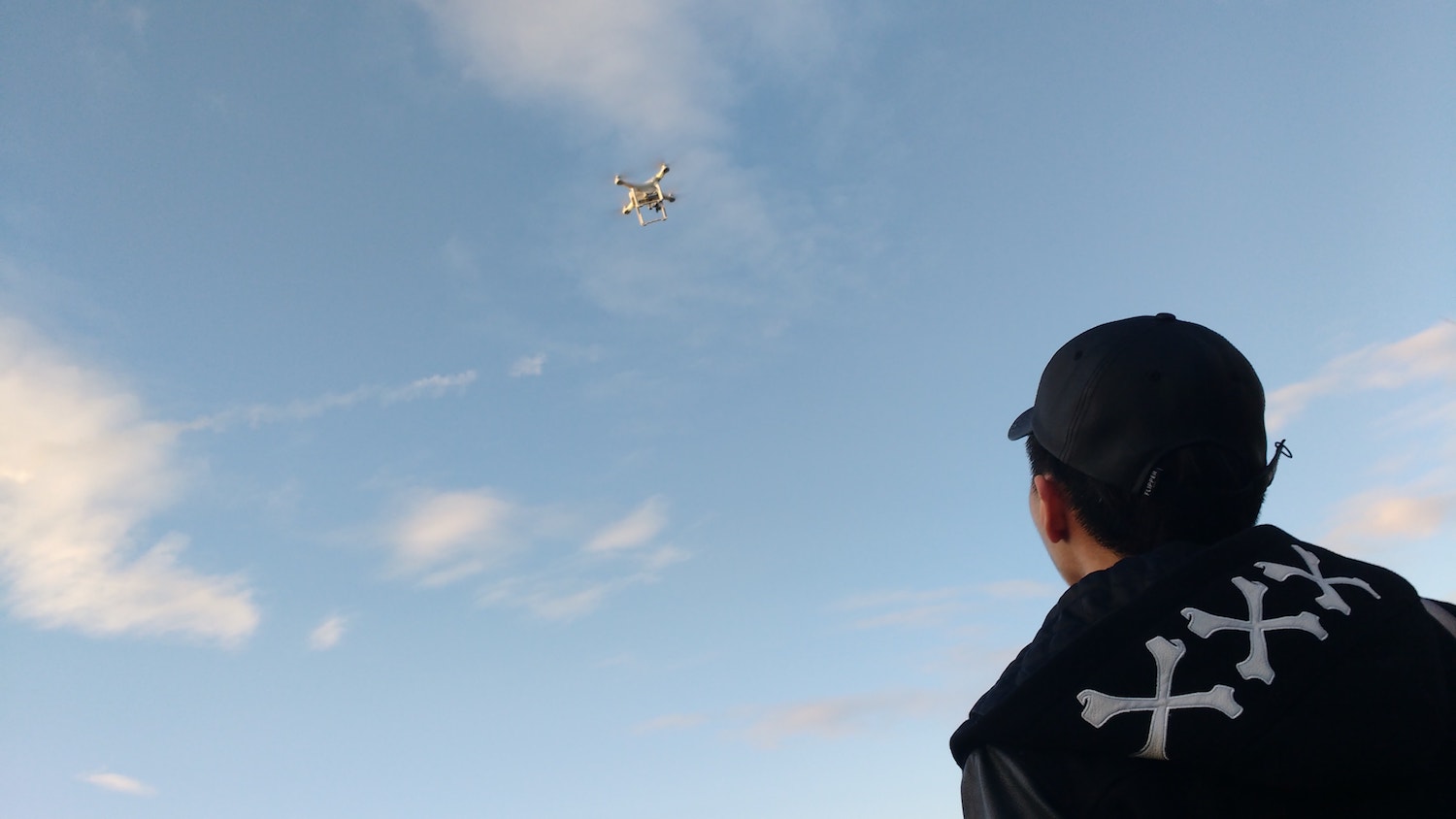
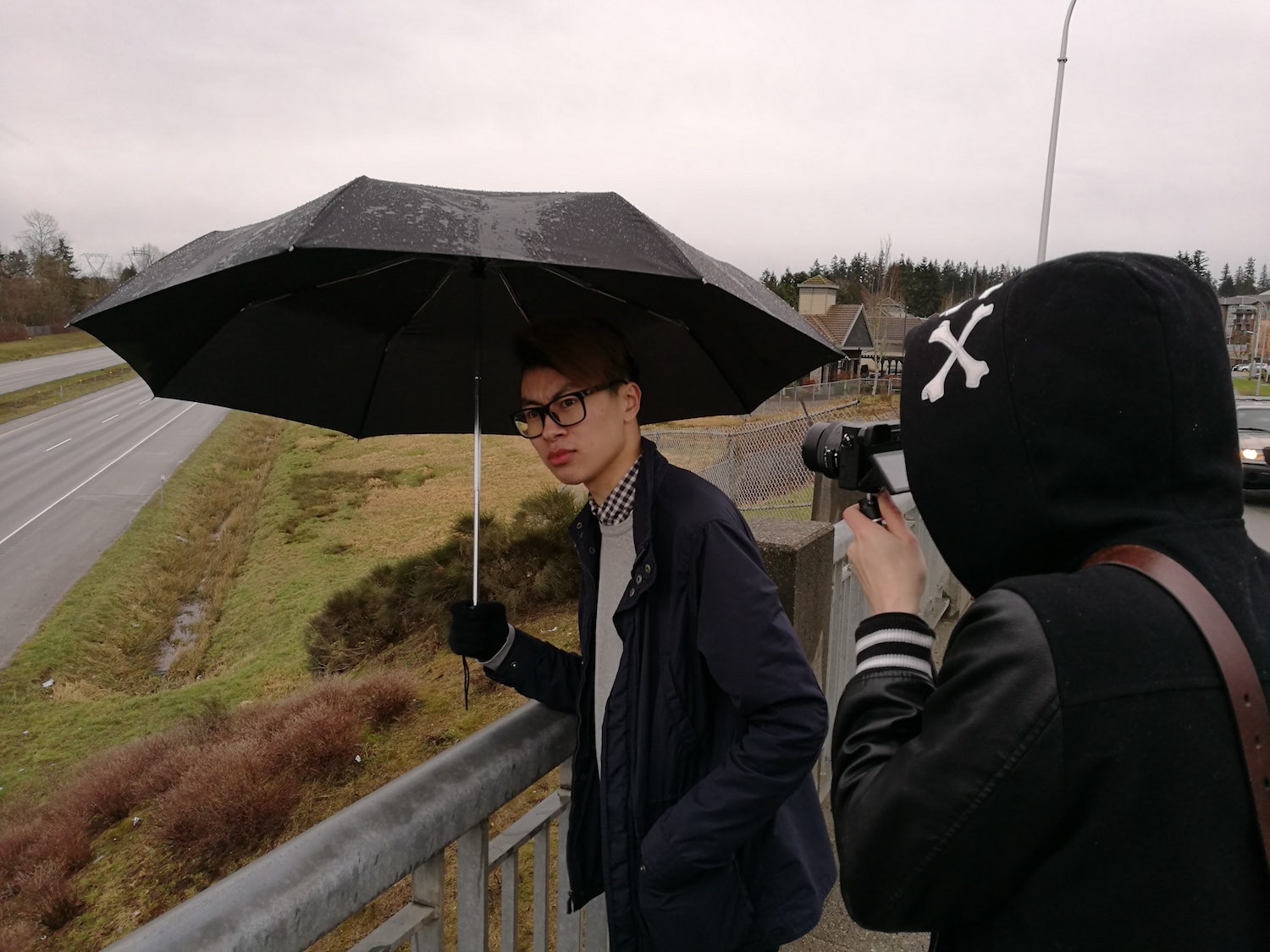
Critical Moments of Discovery
Originally, we wanted to shoot the outdoors tear drop scene during the evening. However, the filming location we were in had poor light conditions and my camera produced a lot of image noise and film grain in the shots. Since I wasn’t sure how to adjust my camera to shoot in low light at that time, I suggested to find a natural lighting spot indoors and reshoot the scene on another day. This turned out fairly well as I was able to mimic the lighting in post production.
Reflection
Overall, I really enjoyed the entire production process of our short film because I was able to experience what it's like to work in a team to produce a film project. Since this was my first short film, I put a lot of effort into filming and editing the video down into 8 minutes. In the end, I was happy with how it turned out as our film was awarded Best Film and Best Cinematography out of 30 films at the film screening. If I had the chance to improve, I would reduce the background noise from the skype call scene by using Adobe Audition. This would remove any unpleasant hissing sounds that came directly from the recordings.
Living Language
Documentary for SFU
Roles: Director, Cinematographer, Editor
Elements: Caligraphy Animation, Color Grading
Softwares: Adobe Premiere Pro, Adobe After Effects, Adobe Audition
Overview
Out of the three real-world clients given by my professor Susan, my team decided to partner up with Greg Dreicer and Vancouver Public Library's upcoming Morph exhibition. We discussed with him our initial idea of transformation revolving around Chinatown and he was able to refer us to June Chow, a co-founder of the Youth Collaborative of Chinatown. After being able to meet her in person and talk about some possible topics, we were able to settle on one underlying program: focusing on the Cantonese School in Chinatown ands shaping the narrative to the transformation of language learning of local born Chinese.

My Role
My main roles in this documentary are Director of Photography and lead editor. Throughout the three lessons remaining in the Cantonese School program, I was responsible for telling the story through the artistic and technical decisions regarding lighting, shot selections, camera operation and other elements. Whether it's operating the camera or recording audio, my teammates were extremely helpful during the entire production because we all knew the general story and the vision that I was going for during pre-production.
Critical Moments of Discovery
Our team was given time after the last lesson of the Cantonese School semester to interview the students and the co-founder June Chow. Unfortunately, the background turned out to be too overexposed with our interviewees due to the natural lighting and there were a few audio issues even after I attempted to fix them in post production. I showed our rough cut to my TA so that I can receive some possible suggestions and the best advice he gave was to re-shoot all the interview parts.
Resolving Issues
My group member was fortunate enough to contact all our interviewees to schedule for another interview session on a very short notice. This turned out to our favours as they were all able to come for the re-shoot. From then onwards, I was able to film the interviews and edit the entire documentary. After going through the final version as a group, we are proud to showcase our documentary video in the Vancouver Public Library that discusses the importance of language and culture in Vancouver's National Historic Site.
Reflection
This project was a great learning experience and it taught me a lot about working with clients and meeting deadlines. If I had the chance to improve on this documentary, I'd retake the audio for the sisters' interview by moving to another location that has less echo because the echo can still be heard in the background even after reducing it in post-production.
